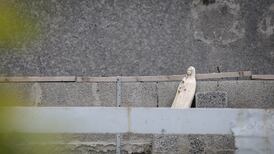Events in Egypt were supported by its middle class while Syria's poor protesters are leaderless, writes MICHAEL JANSEN
IT IS NO coincidence that Egyptian democracy activists were able to overthrow president Hosni Mubarak in 18 days while Syrian president Bashar al-Assad retains the initiative in the eighth week of the unrest.
The Egyptian uprising was launched on January 25th by educated young people who organised events and guided the course of mass action. In Syria, initial protests erupted spontaneously in Deraa when relatives demonstrated against the detention of teenagers who had written revolutionary slogans on walls.
Egyptian organisers were based in the country and exerted a certain amount of control on the ground. Syrian protesters still do not have an identifiable local leadership.
Egyptians had a single objective – the ousting of Mubarak.
Syrian protesters still do not agree on an aim. Radicals want to topple the Assad regime but moderates continue to demand democratic reform. Since the regime began, its military offensive, the primary demand of many has become an end to the crackdown.
In Egypt, the epicentre of the protests was Cairo’s iconic Tahrir Square where Egyptian nationalists proclaimed independence from the Ottoman empire in 1919 and from where president Gamal Abdel Nasser addressed vast throngs after the overthrow of the British-backed monarchy in 1952.
Deraa is a rural tribal backwater located near the Jordanian border in the poor Hauran region of the country.
All of Egypt’s major cities – Cairo, Alexandria, Port Said, Suez, Tanta – joined the protests. In Syria there have been only small demonstrations in Damascus, the capital and largest city, and Aleppo, a major business centre and second city.
Millions of Egyptians took part in protests. Thousands camped out in Tahrir Square, establishing an island of defiance at the heart of Cairo. In Syria, it is impossible to assess how many people have taken part in demonstrations. One blogger put the figure at 40,000.
This would seem to be too low but numbers have not been large enough to deter the regime from opting for suppression.
The Egyptian middle class and lower middle class – professionals, businessmen, civil servants and university students – were the backbone of the movement.
Syrian centres of discontent are largely cities and towns which are home to poor farmers suffering from drought, unemployed labourers and people living on subsistence wages. The large Syrian middle class has not, yet, joined the revolt.
In Egypt, internal security forces and police were withdrawn from the streets by the Mubarak regime on January 28th, the fourth day of protests, and the army did not get directly involved until February 2nd, when armed plainclothes elements of internal security and hooligans attacked Tahrir Square and attempted to drive out activists who fought with sticks and stones and held their ground. Tanks and troops surrounded the square to separate the sides.
The army, initially tasked with protecting protesters, staged the coup that toppled Mubarak.
The Syrian army – involved since early on – has so far remained loyal to the regime and troops have followed orders.
There have been unconfirmed reports from opposition activists that some soldiers have switched sides or attempted to shield pro- testers from army fire but these are few.
Egyptian protesters were almost entirely peaceful. Violence was perpetrated largely by pro-regime thugs. From the outset, Syrian protests have been characterised by torching of public buildings and thrashing banks and cash machines.
Shadowy armed gangs have attacked protesters and security forces, providing substance to regime accusations that armed terrorists are seeking destabilisation.
In Egypt, the Muslim Brotherhood played a marginal role in the uprising and radical fundamentalists (Salafis) opposed to democracy did not take part. In Syria, the Muslim Brotherhood and some Salafis are involved in protests.
This has alarmed Christians, secularists, Alawites and others who fear a fundamentalist rebellion comparable to that crushed in 1982 by the president’s father.
Finally, international media covered Egypt during the uprising but they have been excluded from Syria, making it impossible to validate reports, video material and declarations from regime opponents.
The absence of media has enabled the Syrian crackdown to proceed while the Egyptian security forces were constrained by the threat of publicity.
Events in Egypt can be considered an uprising while those in Syria should still be classified as a revolt.








